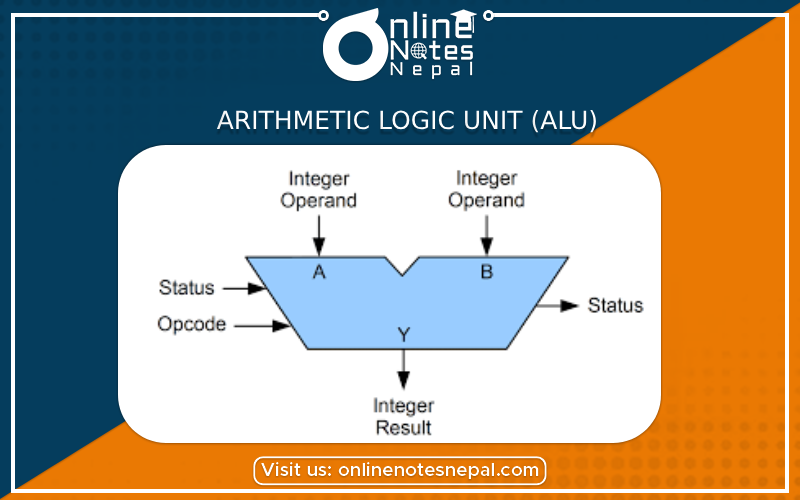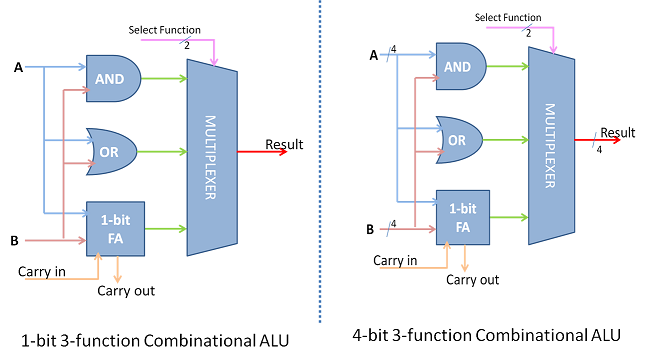Published by: Dikshya
Published date: 13 Jul 2023

An Arithmetic Logic Unit (ALU) is a fundamental component of a computer's central processing unit (CPU). It is responsible for performing arithmetic operations (such as addition, subtraction, multiplication, and division) and logical operations (such as AND, OR, XOR, and NOT) on binary data The ALU receives inputs from registers or memory locations and performs the requested operation based on control signals.
Arithmetic Operations: The ALU can perform basic arithmetic operations on binary data, including addition, subtraction, multiplication, and division. These operations are executed using various techniques such as binary addition, two's complement for subtraction, and algorithms like Booth's algorithm for multiplication.
 Logical Operations: The ALU can perform logical operations on binary data, such as bitwise AND, OR, XOR, and NOT operations. These operations are used for tasks like data manipulation, data comparison, and logical decision making.
Logical Operations: The ALU can perform logical operations on binary data, such as bitwise AND, OR, XOR, and NOT operations. These operations are used for tasks like data manipulation, data comparison, and logical decision making.
Shift and Rotate Operations: The ALU can also perform shift and rotate operations on binary data. Shift operations move the bits of a binary number left or right, while rotate operations shift the bits and wrap them around to the other end. These operations are used for tasks like shifting data in or out of registers, rotating data for encryption algorithms, and manipulating binary numbers.
Comparison Operations: The ALU can compare two binary numbers and determine their relationship, such as equality, greater than, less than, or not equal. Comparison operations are essential for making decisions based on data values, branching in program execution, and implementing conditional statements.
Flags and Status Registers: The ALU often includes status registers or flags that indicate the outcome of operations. These flags store information such as carry, overflow, zero, and sign, providing information about the result of the previous operation. These flags are used by the control unit of the CPU to make decisions and control program flow.
Bitwise Operations: The ALU can perform bitwise operations, which manipulate individual bits of binary data. This includes operations like setting a specific bit, clearing a bit, toggling a bit, and extracting specific bits from a data word.